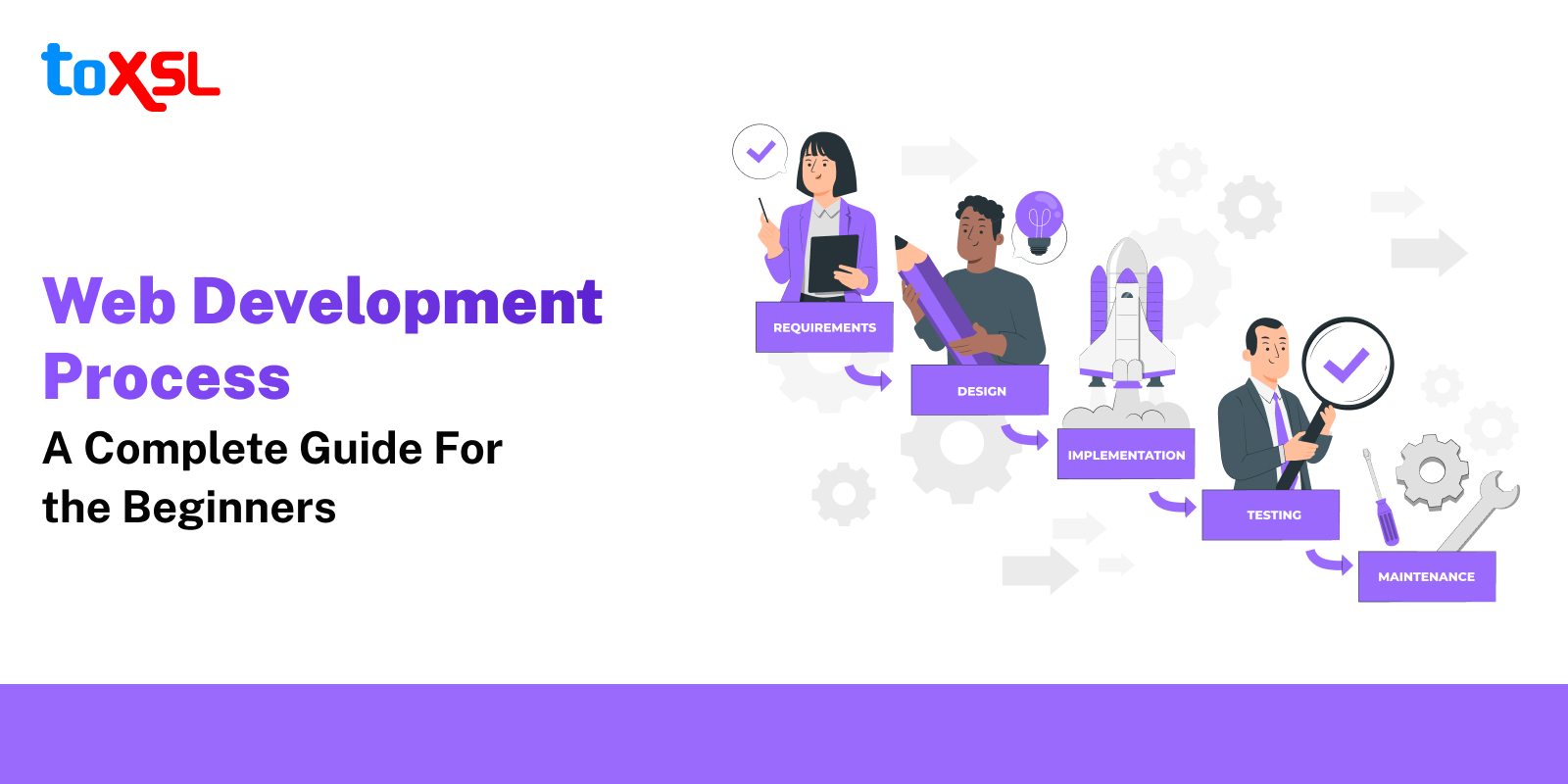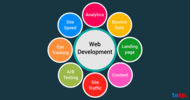- Oct 08, 2025
Share this post on:

In today's world where digital technology has influenced and had an impact on almost every other person, businesses started putting efforts into building their online presence. To make it possible, the first and foremost step is to create your website. Some people think the process to be simple but that is not true. Although it seems like a regular desktop application development but does have some marked differences that make the overall process complex.
For an effective web development process, it is essential to get a basic idea of technologies like HTML, CSS, JavaScript. The use of these technologies in the right way give the perfect shape to the website where businesses can build an effective interaction with their potential customers. To get the best result in hand it is important to understand every step from preliminary information gathering, to detailed planning, and post-launch maintenance involved in the development of the website.
Do not forget, a website is a base of the business and it should speak aloud about your brand and services.
A successful website does three things: It attracts the right kind of visitors, guides them to main services or product you offer, and collect contact details for future ongoing relation, says Mohamed Saad.
Steps Involved in the Web Development Process
1. Gathering Information
Every new thing begins with a certain purpose in mind and so does the process of web development. To give your website the best picture it is essential to define its purpose, the goal and the type of audience to target with the information.
This stage is the discovery stage in which the research work begins by keeping in mind the goal and target audience. This will help in developing a clear understanding of the website thus help in planning the best strategies for the future. Spending good time in doing research and in collecting pre-development data helps in protecting you from spending extra hours in building and resolving unnecessary issues in the future.
2. Planning, Sitemap and Wireframe Creation
This is a blueprint that helps the customer in knowing how the actual website will look like.
In all, the sitemap is a way that helps describe the relationship between different areas of the website that generate a clear understanding of its use. It helps the client to know how the different pages on the website are linked and helpful in generating the maximum information from the resources and data available. Make sure you use the right knowledge and good time to create a sitemap that is easy to understand and navigate.
Since sitemap is the representation of the flow of information of the website it does not describe the user interface. To make things clearer, a wireframe or mock-up is a sketch work that is created to provide the visual appearance of the website without the use of any colors or graphics.
The last thing on which the decision is to be made during the step is the selection of the technology stack like a programming language, framework, CMS, etc on which you would work to create an imperative website.
3. Designing
It is the step in which you offer the shape and appearance of your website. It consists of the addition of visual content, images, graphics, videos and other information on the webpages. During the designing and layout of the website, it is very important to keep in mind the target audience. Do a proper sketch work of your ideas and send them to the client. Make sure that you put the perfect idea on the paper that can be easily understood by the client. Still, if the client wants some changes, discuss it and make things clear before delivering the final product.
4. Content Writing and Assembly
Content writing plays a crucial role in the web development process. Creating an influencing content with the true information helps you in communicating with the target audience and therefore it is important to invest proper time and energy in this stage of the web development process. Add call-to-action to influence a person to use the services. Reviewing call to actions examples provides guidance for crafting prompts that encourage users to take the desired action.
The perfect content writing is all about creating informative content, catchy headlines, text editing, compiling the existing text, etc. Since most of the client demands the website delivery along with the complete content in it. It is therefore very important to get the work done beforehand.
5. Coding
This is the step in which all the parts are connected and implemented to create a well-defined structure one by one.
Begin the step by creating a home page first, move ahead by adding sub-pages and follow the hierarchy as discussed in the sitemap. Use Graphic designs to give your website a visual appearance. Implement the framework and CMS you have chosen.
The static pages that were created during the mock-up and layout creation should be tested. Install CMS plugins if required. Optimize the website with SEO. This will help you in ranking your website on search engines thus will help target potential customers and let people know about your products and services.
6. Testing
It is the most important step that helps in judging your work before its delivery to the customer. Here, it is important to test every single link, form, script, and even run a spell-check software that helps in finding any typing mistake. Make use of code validator to ensure that the code you used follows the current web standards.
Once all the testing process is done, upload the website to the server by using the File Transport Protocol (FTP) software. After this, you can run the final test to be fully sure that all the files are uploaded correctly.
7. Maintenance
Delivering a functional website is not enough. It is more about services than the delivery of the final product. It is very important to make sure that everything goes well and everyone is satisfied with what you have provided. If you find any issue, make sure that you fix it as soon as possible.
Along with offering better delivery and services, it is vital to keep the website up to date. This keeps it safe from any security issues and bugs.
Conclusion
The website development process is not something that starts with coding and ends with the final launch of the website. The various and subsequent stages of the process is something the help in delivering impressive work. Keeping in mind the goal of the project and the target audience helps you to win half battle. Make sure you put every possible effort and make changes to offer satisfaction to the end-users. Paying attention to every minor detail of the project helps you in gaining confidence and full control over the project.
Learn the development process and gain proficiency by getting the right guidance and training from the most renowned company ToXSL Technologies. Get in touch with the concerned person to know more.












